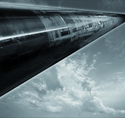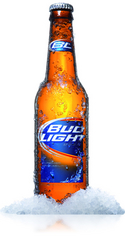One foot in the gravure
30 September 2010Marginalised by many as out of date, there’s still plenty of life left in gravure and some compelling reasons for realising its potential value, discovers Sam Cole.
It’s nigh on impossible to talk about gravure without the ‘F’ word coming up. Whilst this long-established Rolls Royce of print processes might be the automatic choice for the magazine publishing and decorative sectors, tighter margins and shorter run lengths characterising today’s supply chain have seen its share of the flexible packaging print market effectively hijacked by flexo or rotary screen/flexo combination presses over the past 15 years.
Gravure’s decline has been most marked in the UK, Western Europe and especially in North America, where it only accounts for around 20% of all applications. Further East - in Asia and particularly Japan - it still holds sway, where apart from anything else, flexo would be hard pressed to achieve the definition of intricate hieroglyphics that gravure manages with consummate ease.
These are buoyant markets in their own right, and given the in-situ level of investment in gravure, unlikely to be penetrated by flexo in the near future. Even so, on our side of this East/West divide, it’s hard not to assume that gravure is on its way to becoming history.
Not necessarily so, says Sun Chemicals business development manager Barry Ferne. “Whilst gravure is now the minority process, it’s still a huge feature in our customer base. If anything we feel that it’s stabilising, and has been for about the past 18 months.
“The cost element of the flexo process is obviously a lot less than gravure, but where gravure has maintained a foothold is for long runs, and the quality it has always achieved. The developing area for gravure now is its ability to print coarser pigments, creating additional special effects such as tactile and glitters where consumers are looking for extra engagement with the product on-shelf.
“That’s easier to achieve with gravure due to the heavier ink weight it can carry, whereas flexo would struggle. Indeed, under certain circumstances where the only solution is to print something that is of an aggressive nature to achieve the final specification, gravure would be the preferred process.”
Counting the cost
Where gravure falls short, say its critics, is at the front end. A typical gravure cylinder will be a steel base, which is coppered, electronically engraved, and then chrome plated, all engineered by a specialist supplier, so it is a relatively cumbersome process compared with CTP technology undertaken in-house.
It will, however, last indefinitely. Plus, once the initial investment has been made in the steel base, it can be repurposed within limits at less cost than a new plate, says Keating Specialist Cylinders CEO Mike Keating. “In flexible packaging, the larger converters expect to buy in cylinders from engravers for around €350, whereas a flexo round in the same 1.3 – 1.4m size would be €400 and wouldn’t last five years.
“That initial cost could reduce too. Aluminium often replaces steel in Asia, and plastics could do the same,” says Mr Keating. “We’ve used light-weight plastic-based builds in the UK, but that was for one customer only. It’s a fantastic concept, but has never taken off world-wide. Because it’s got a very thin steel tube through the centre and the outside is polyurethane, you can make the cylinder to any size you want. The problem in gravure used to be that every millimetre difference in size meant that you either had to re-copper, or in cases of 10mm and above you had to buy new steel bases. As you can imagine, the printer would accumulate thousands of these over time. The idea behind the plastic alternative is that when you finish a run, you could then make it into any size that you wanted.”
One of the reasons for gravure establishing such a strong hold over the Asian market is that cylinders have traditionally been categorised as virtual consumables. Correspondingly, it was a market price of around US$2000 per cylinder that persuaded US brand owners to look at alternative technologies.
Presses fit for purpose
Capital equipment suppliers haven’t been standing idly by, however, whilst their customer-base has been migrating to flexo. “Because the market has taken a dive, the gravure press manufacturers in Western Europe and especially in the States are simplifying the equipment to make it more competitive,” says Keating. “I hear there are 1m face-length presses that can cost around £1 million, and which will very competently produce gravure standard print.”
Changing that perception of gravure only being appropriate for high volumes is also being addressed; indeed, Uteco’s Q-Press has been specifically engineered to handle short runs. Rather than using interchangeable rotogravure trolleys it incorporates cylinders that can accommodate engraved sleeves that can be quickly removed during job changes. It can also be equipped with print sleeve cylinders using direct drive servomotors with top mount print sleeves that allow the entire repeat range to be printed.
Recently installed at Constantia Hueck Folien’s pharmaceuticals and flexible packaging production facility in Pirkmühle (Germany) as the core component of a €10 million investment programme, Rotomec’s 12-colour RS 4004 high-speed gravure press facilitates very fast job makeready and semiautomatic job changeovers with minimum press downtime, as well as high speed operation for printing and in-line lamination and cold seal coating applications.
It was installed to drive growth in high performance food packaging applications, explains Project Manager Johann Kopp. “Our printing requirements can range from run lengths from 15-20,000m up to longer ones averaging 100,000m. It is therefore crucial that the new press is able to handle such a range of different print jobs in the most efficient way and make its operation profitable under all circumstances.”
Meanwhile, the other major player in the industry, Italian manufacturer Cerutti, claims to have installed 10 gravure presses across Europe last year including a 10-colour R970 system with an inline solvent-free lamination facility for food product packaging applications at FA Wipak’s plant in Bomlitz, Germany.
With a running speed of around 400m/min and a web width from 800mm – 1.4m, the R970 has also been flagged up as a short to medium run length solution for all standard flexible film applications.
Spearheading the label sector
Cerutti has also supplied the most recent gravure press into the UK packaging market: the 350m/min R960/2 installed at Spear Labels’ Cwnbran site, which generates an annual €40 million turnover as the European arm of a US owned specialist pressure-sensitive label (PSL) business serving global beverage brands.
Spear was the first converter to develop a filmic PSL in conjunction with Procter & Gamble in the USA; initially for the health & beauty sector, and then extending into beverages in the ‘80s. Its investment in gravure started six years ago, says UK Sales and Marketing Manager Matt Davies.
“Around that time, Bud Light, which was then the top-selling beer worldwide, transferred from a paper labelling system to a filmic pressure sensitive one. It required gravure to achieve the lowest possible cost platform for that volume of print including high gloss metallics. For any high volume at fast speed we now always put those jobs onto the gravure press. It’s the most cost-effective way of running those jobs,” says Mr Davies.
“Supplying into the beverages industry, we need a lot of flexibility to handle spirits where you’ve got multi-lingual back labels with short runs from 5–20,000, right up to the high volume beer sector with runs of 45–50 million upwards.
‘The other major benefit of the gravure process is that we can achieve everything required: the solid colours that are important for opacity; the high definition image; and also the high gloss metallic effects with a reverse-printed solvent gold or silver ink.
“We can achieve a standard of high gloss finish that’s so critical to this sector with gravure that wouldn’t be possible on a narrow web combination press. To get anywhere close we’d need to add hot foiling, which is a beautiful effect but a more costly option as well as adding a further process to the production,” concludes Matt Davies.
A typical gravure cylinder consists of a steel base, which is coppered, electronically engraved, and then chrome-plated. (Photo supplied by European Rotogravure Association.) ERA Uteco’s Q-Press has been specifically engineered to handle short runs. Uteco Cerutti has supplied the most recent gravure press into the UK packaging market: the 350m/min R960/2 installed at Spear Labels’ Cwnbran site. Cerutti Bud Light transferred from a paper labelling system to a filmic pressure sensitive one: it required gravure to achieve the lowest possible cost platform for the volume of print including high gloss metallics. Bud Light External weblinksConverting Today is not responsible for the content of external internet sites.Sun Chemical Keating Specialist Cylinders Uteco Rotomec (Bobst) Cerutti Spear Labels





